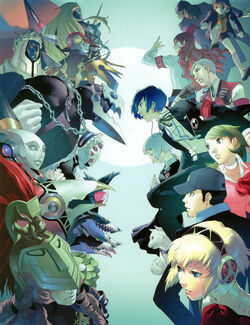
I am thou... Thou art I...The line most Personas say upon awakening
A Persona (ペルソナ, Perusona)? is a manifestation of a Persona user's personality in the Persona series, referred to as a "mask" for an individual to use to face hardship. Rather, the term "persona" is Latin for "mask."
A Persona is similar to a Shadow. Shadows are malevolent manifestations of one's inner thoughts, while a Persona is a manifestation of the same feelings but tamed and trained.
If an individual takes up a resolution in their heart, the Persona will undergo a metamorphosis into a stronger form.
While the summoning sequence of a Persona differs from one installment to the next, a tradition that later adaptations follow is that blue-ish fire is always released when a Persona is invoked.
A fight using Personas weighs on the user's mind and spirit. Continuous use of a Persona will eventually drain the user's strength and stamina. Using Persona skills requires "SP," or "Spirit Points."
In the depths of human hearts, shared by all people, there is a domain where mythological archetypes dwell, and they grant an influence over an individual's personality development. Anecdotes of mythological divinities the world over probably exist because of that, so one could say that gods and demons exist not in Heaven and Hell but in the hearts of humanity. Personas even have an influence on physical and mental abilities, making their users superhumans, for example giving them mastery over weapons or resistance to terror and madness.
Profile
Megami Ibunroku Persona
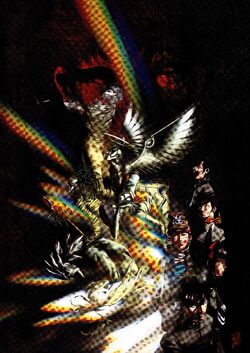
At the beginning of the game, the main characters play a game called "Persona." Afterward, they fall unconscious and meet Philemon, who gives them the power to use Personas. Each character's Persona "awakens," and is then able to be called out at will. Some characters who hadn't met Philemon could summon a Persona regardless—most likely due to Maki Sonomura's dreamworld, which was created by the DEVA System.
Unique to this game, the Personas that can be equipped are not determined by the character's level, but by their "Persona Level," which accumulates experience at a different rate than the character experience; invoking a Persona gives more experience to the Persona Level than using weapons or firearms. Despite this, Persona creation is tied to the protagonist's Character Level, and a Persona cannot be created if its level is more than 10 levels above him. Additionally, some Personas can only be created using a Totem, and the most powerful Personas also require specific demons' spell cards to create. Personas themselves do not level up, but grow as their Rank increases from being invoked a specific number of times in combat.
Persona 2
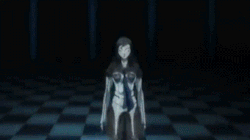
Persona 2: Innocent Sin and Persona 2: Eternal Punishment features a similar mechanic to Megami Ibunroku Persona, in which the main characters can already have the ability to summon Personas due to previously playing the Persona game when they were kids. Each time the character summons a Persona, it costs a flat amount of SP regardless of the spell used, dictated by the affinity between the user and the Persona. Characters with the "Worst" affinity with a Persona simply cannot equip it. Better affinity with a Persona has a few advantages: the SP cost is lower and there is a higher chance of triggering mutations, which in Eternal Punishment includes a higher chance of unlocking a Persona's Unknown Power.
The level of each Persona is static, but they gain Rank gradually when they are summoned in battle (rather than using healing or support spells out of battle). A Persona learns new spells as it reaches higher ranks, plus one more "mutation spell" only obtainable via mutation after it has reached at least rank 6. After reaching Max Rank, a Persona's stats can continue to grow via mutation.
Personas can be created in the Velvet Room by spending a certain amount of Tarot Cards that have the same Arcana as the _target Persona. Some Personas also require a Material Card to create. Before confirming the creation, the player can also add a Skill Card and/or an Incense Card to slightly enhance the Persona. The player can create any Persona up to 5 levels higher than any party member of the highest level with the only consequence being that it requires more SP to cast any spell with that Persona.
Persona 3

In order to summon a Persona, one must use an Evoker, though there are some cases where an Evoker is not required for summoning. A Persona can actually be artificially created, but because the Persona does not come naturally to its artificial user, it becomes violent and difficult to control; if the Persona-user isn't strong enough to hold back the Persona, it may even wind up killing the host. Artificial Personas can be suppressed by certain drugs, called Suppressors, but use of the drugs causes fatal side-effects. It's possible for one to have the power of the Wild Card, meaning that multiple Personas can be contained simultaneously. The only two seen capable of this power are the silent protagonists (male and female) and Aigis. Personas can no longer be summoned or equipped if their level is higher than the protagonist's.
During The Answer chapter of Persona 3 FES, Metis reveals that Personas are tamed Shadows.
Philemon does not appear in Persona 3, but there are several references to him, namely a fluttering blue butterfly that can be seen several times throughout the game.
In Persona 3 The Movie, when the user's stamina is used up too much, they can no longer summon a Persona unless they take a rest or until they are healed. Similar to Persona 4 The Animation, there have been cases where a user takes damage after a Persona is destroyed (for example, Takaya recoils in pain after Hypnos is destroyed by Caesar).
Persona 4
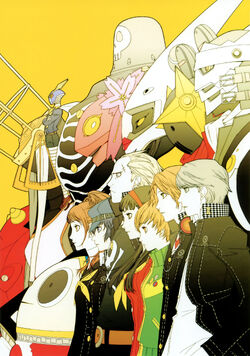
When one enters the Midnight Channel, one's innermost secrets that they actively try to suppress materialize and become a Shadow Self, which then attempts to force its host to accept it. If one cannot accept the Shadow Self, or if they refuse to acknowledge what they want to keep hidden most, the Shadow becomes enraged, attracting all nearby lesser Shadows to itself and transforming into a monster which attempts to kill the person it spawned from. If one can face oneself and admit to what the Shadow Self says, then the Shadow transforms into a Persona loyal to its user. During battle, one summons their Persona by manifesting their tarot card and breaking it, causing the Persona to emerge.
Igor later reveals that a Persona is formed by having one's ego master its Shadow, but adds that it is also possible for a Shadow to become a Persona-user by developing its own ego (like in the case of Teddie). As Teddie is the only known Shadow to be able to use a Persona, this possibility is extremely rare at best.
In the anime, rather than summoning it only for spells, Personas do all of the fighting against the Shadows. But when the Persona takes damage, so does its user, and a very weakened Persona will start to show a bit of static in its body. In addition, when Yu fuses his Persona (aided subconsciously by Igor), he does it on the spot.
Persona 4 Arena
The use of Personas and their existence in the world is explored more in Arena. Members of the original SEES form the "Shadow Operatives," under control of the Kirijo Group, working under Mitsuru Kirijo, who partner with public safety officers on cases involving Shadows. Personas and Shadows are shown to be known by higher-ranking officials and are kept secret from public knowledge. It is now shown that Personas are still able to be summoned in the regular world even after the Dark Hour disappeared, but also requires the use of an Evoker. However, it can be summoned without one during a crisis or with extreme concentration.
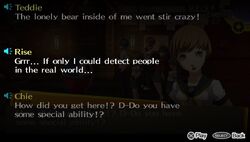
The Tarot Cards the Investigation Team use seem to be of little use in the real world, as the members are shown to be unable to summon their Personas outside the TV World, as Rise mentions once in Persona 4. The TV World, however, helps those who have summoned Personas beforehand, making it much easier than before, to the point where the use of an Evoker isn't necessary to summon one; Mitsuru expresses surprise at only having to think of her Persona to bring it out.
Persona 4 Arena Ultimax
Persona 4 Arena Ultimax also showed that a Support Persona can become a Combat Persona if the user displays a strong resolve to fight. Rise achieves this with Himiko due to her desire to save her friends during the events of Ultimax.
Persona 4: Dancing All Night
Rise further displayed the ability to morph her Persona into other forms by using the power of Kanamin Kitchen's positive energy and acceptance of their Shadow Selves to transform Himiko into a grand stage for their final battle against Mikuratana-no-Kami.
Persona 5
You will be training the power of Persona, which you have awakened to. Personas are, in other words, a "mask"—an armor of the heart when confronting worldly matters.Igor to the protagonist, Persona 5

In Persona 5, Personas are formed by individuals who find themselves in the Metaverse and are dealing with feelings of frustration of being wronged or taken advantage of. Should the person decide to rebel and take revenge, their Shadow Self calls out to them, forming a mask on their face. Their eyes also turn yellow, indicating their Shadow Selves are merging with their owners. Ripping this mask from their face formalizes their contract, causing the Shadow Self to turn into their Persona and take form. The process of tearing off one's mask is particularly painful, as it leads to excessive bleeding. Once the contract has been formed, the person then receives a special thief suit that represents their idea of a rebel, and the mask becomes a normal mask that they can freely take off without pain and serves as the conduit for their Persona abilities.
Futaba Sakura is a partial exception to this. She faces her Shadow Self like the characters do in Persona 4, and does not tear off a mask to gain her Persona. Like the other Phantom Thieves, however, her awakening was fueled by a desire to take revenge against those who wronged her (in her case, the Conspiracy that faked her mother's suicide). Her focus on discovering the truth rather than simple revenge results in her not having combat abilities like the others. Haru Okumura shows that a person can access their Persona and thief suit simply by feeling rebellious; but without a firm resolve, it can only manifest. Only upon fully accepting her desire to rebel against her father did her persona Milady finally access its full power. Milady affirmed this by stating that she could unleash her true potential during Haru's awakening.
In Persona 5 The Animation, just like prior anime adaptations of the series, when a Persona is hurt or destroyed, the user will be hurt as well. Goro Akechi suffered damage when his Persona, Loki, was defeated during his fight with Ren Amamiya.
In Persona 5 Royal, Sumire Yoshizawa is a unique case since her initial awakening involves no blood after she removes her mask, hinting that she did not have a complete awakening similar to Haru. Her Persona was strong enough to fight, however, considering Sumire was currently living a life as her sister, it can be assumed that her awakening was incomplete due to her not being true to herself. Later, after accepting herself and desiring to fight without needing to rely on her friends, Sumire completely awakens with blood and yellow eyes, fully gaining Cendrillon. This time, her Persona merges with the spirit of her sister, the real Kasumi.
It is shown that mental instability—or possibly influence from an outside force—can lead to a Persona being removed or corrupted, as was the case for Sumire. An unconscious, restrained Sumire had her Persona forcibly removed, turning it into a powerful berserk state. It is unclear if this situation is unique to Sumire's circumstances by virtue of her being especially vulnerable to it due to her pre-existing cognitive instability due to previous tampering as well as her traumatic grief and depression, or because that is simply a power Takuto Maruki has.
Additionally, there is indication that Personas are able to have some level of autonomy from their owners, possibly to the point that they're able to influence them and their psyche, as indicated by Azathoth urging Maruki to continue his plans when Maruki expressed doubts, as well as periodically and seemingly outright acting through him. It is unclear whether this case of Personas acting somewhat independently is similar to Nyarlathotep, or if it is more similar to the unstable Persona users seen in Persona 3. Once again evoking previous Persona games, Maruki was able to fuse with his own Persona to increase his power to near-unbeatable levels.
Maruki additionally acts as an outlier as a Persona user which is also a Palace Ruler, both accepting himself yet holding grand delusions for his perfect reality. It is unknown how this came to be, however, after fusing Azthoth and his treasure, Maruki "evolves" his persona, which can be seen as an awakening, implying that Azathoth may have been a corrupted or incomplete form of Adam Kadmon. As a side effect of his status as Palace Ruler, Adam Kadmon is also much larger than normal for personas, and Morgana speculates that it may have been a result of his control over reality.
Persona 5 Tactica
In Tactica, it is revealed that in rare cases, a cognitive being can also display traits of a Persona if given the seed of its original person's willpower, described by Lavenza as the 'seed of a Persona'. This is shown with Erina, who is (in part) a cognitive being based on Toshiro Kasukabe's high school friend: Eri Natsuhara. Although she is a being based on the memory of Natsuhara's bravery and willpower, Erina developed the will of rebellion of her own when Toshiro's subconscious granted it to her in order to protect his mind from the influence of Salmael. Once Toshiro reawakened his own will of rebellion, Erina became his persona, while also retaining her autonomy and original personality because of her nature. However, because she is also based on the repressed positive, heroic traits of Toshiro's personality, in addition to being a persona and based on a real person, Erina displays the traits of a Shadow, Persona and Cognitive simultaneously, however Lavenza considers her a unique case. Lavenza also reiterates that in most cases, a shadow and a persona are merely two sides of the same coin, being the repressed side of an induvidual's inner self.
Persona 5: The Phantom X
In Persona 5: The Phantom X, there exists true Persona users and Phantom Thief Idols. The latter group are cognitions made from Wonder's heart. While these idols have “personas,” they aren’t true Personas. They are strong Shadows that Merope bestows to each Phantom Thief Idol. Those “personas” are known as “Persona II”. Despite the differences they function identically to how usual Personas in Persona 5 do.
Persona -trinity soul-
Everyone possesses a Persona, but only those who have summoned it before and know of its existence may call it out by will by concentrating one's mind. Personas that have consumed other Personas will be more unstable and will need Persona suppressors to keep their Personas under control. The anime also states that a person's ability to summon a Persona weakens as they reach adulthood, and they may need to take medicine to keep up. This, however, contradicts Megami Ibunroku Persona and Persona 2, as the rest of the adult cast in those games can summon their Personas without issue, with Persona 4, Persona 5 Royal, Persona 5 Strikers, and Persona 5 Tactica all having grown adults awaken to their Personas as well. One character in Trinity Soul speculates that this may simply be due to adults' tendency to lose their strong sense of identity as they grow older, and that it's not inherently about age, but personality. Despite that, however, this is one of the reasons that Persona -trinity soul- is not considered canonical to the series.
Persona Behavior
Awakening
The awakening of a Persona in someone with the ability to summon and command them can depend on several internal and external factors, but the most recurrent way in users is sudden danger or an emotional episode. In Megami Ibunroku Persona, Innocent Sin and Eternal Punishment, the main casts are confronted by threats from demons or other Personas, which fully activate their Persona abilities and allow them to defend themselves. An example of an emotional awakening is with Kei Nanjo, who sees his retainer Yamaoka mortally wounded by demons. Danger may be deliberately placed before the characters to prompt their awakening, as in Eternal Punishment where JOKER summons demons and forces Maya Amano, Ulala Serizawa and Katsuya Suou to awaken to their Personas.
In Persona 3, Persona awakenings depicted in the game show that a sudden danger prompted them to appear. Mitsuru Kirijo had joined her father on an expedition into Tartarus, and when he was attacked by Shadows she awakened to Penthesilea. Similar happenings occur with Akihiko Sanada, Junpei Iori, Yukari Takeba, Ken Amada and Koromaru. An exception is Fuuka Yamagishi, who awoke to her Persona naturally when she wanted to protect others. The protagonist's power was awakened through a combination of danger, his contract with Igor and some strange prompt from the boy Pharos. Persona 3 also mentions that Persona users must have the "potential."
Persona 4 shows awakening in a slightly different way. While the protagonist Yu Narukami awakens to his Persona ability when attacked by Shadows, the other members of the Investigation Team are faced with their berserk Shadow Selves, which must be defeated and accepted before they transform into Personas.
In Persona 5, each Persona awakening is triggered by the user facing against some detested fate or person, such as Ryuji Sakamoto facing down his tormentor Suguru Kamoshida; every member of the Phantom Thieves makes a resolve to stand against their oppressors. The process is traumatic, as the user is wracked with debilitating pain.
Persona 5 also shows the idea of a false, or incomplete awakening, with both Haru and Sumire awakening their personas only to have their true awakenings later. In Haru's case, her incomplete awakening led to her persona being unable to fully manifest. In Persona 5 Strikers, a similar event occurs, with Sophia using a pseudo-persona for much of the game and only awakening her true persona later on after she gained a stronger sense of self and rebellion.
In virtually every case of awakening since Persona 3, the process is physically and mentally exhausting, with the newly-awakened user needing to rest away from the field of battle for a time.
Loss of Control
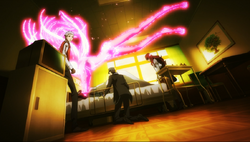
While Philemon describes the Personas as reflections of a character's inner self, there have been many instances where a Persona has rebelled against their user. Every recorded incident has either been due to the extremely risky procedure of artificial Persona awakening, or external factors.
In Persona 3, for example, Strega members must take medication to prevent losing control of their Persona and being killed by it, as they are a group of artificial Persona users. In Persona 3 The Movie, Shinjiro is strangled by his Persona Castor. Additionally, during Megami Ibunroku Persona, Takahisa Kandori loses control of his Persona and it possesses him, turning him into a demon. However, this was because his Persona was actually Nyarlathotep in disguise.
In Persona 4, Teddie mentions that denying a Shadow's message again after it has manifested as a Persona can result in it devolving back into a Shadow and attempting to kill its user. Additionally, according to the Malevolent Entity, a Persona will revert into a Shadow if its user experiences extreme psychological stress, allowing him to then use it to create a body to destroy the outer world. In reality, this was merely a miscalculation by the Malevolent Entity; Shadows that have reverted from Personas are much more obedient to their hosts due to its experience as a Persona, making it very difficult for the Malevolent Entity to directly take them as a part of its body without any backlash, forcing him to change his plan. This reversion is also seen in Persona 4 The Animation, where Izanagi dissolves into Shadow Yu and reforms back forth simply by being talked to, outlining how greatly Yu relied on his friends. Due to the nature of this occurrence, and how Yu Narukami was under a great deal of emotional stress during his fight with Margaret, this can be seen as supporting evidence for the Malevolent Entity's remarks.
Persona 5 Royal marks the first time where Personas can completely go out of control and take over their users due to a combination of external influence and their own grief. Takuto Maruki obtained his Persona after his fiancée Rumi's parents were murdered and she subsequently fell into catatonic depression. This granted him the power to alter anyone's cognition. Maruki later uses this power to restrain Sumire Yoshizawa, causing her persona, Cendrillon to go berserk. In addition, Maruki's ultimate Persona, Adam Kadmon, assumes full control over Maruki after he willingly surrenders himself to his own Persona in desperation, raising its strength to an almost godlike level.
Just like demons fused by the Cathedral of Shadows in Megami Tensei games, Personas cannot be controlled by a person that is not of an equal or greater strength than it, which is the reason why the Velvet Room usually refuses to fuse Personas that are of a higher level than its guest. The actual effects are seen in Persona Q, where Elizabeth attempts to use a Zeus that is one level higher than herself against the party, and ends up possessed by it in the process. However, in Persona 5, should the protagonist progress the Strength Confidant enough, they are allowed to pay to fuse Personas at a higher level. In Persona 5 Royal this is given earlier, but with a higher cost until the protagonist maxes the Confidant.
The Persona Game
In Megami Ibunroku Persona and Persona 2, there is a ritual that appears in the form of a game, and an incantation respectively.
In Megami Ibunroku Persona, the "Persona" game starts with four participants in each of the four corners of a room facing inward, with the rest of the participants standing inside the room. One of the people in the corners will shout out something along the lines of "Persona, Persona, please come here." Then the first person walks to the right, until they're standing by the second person in a corner. Then that person repeats the action, ending up near the third and so on. The game ends when the fourth person reaches the spot the first was positioned at the start of the game.
In Persona 2, the game is called "Master Persona Incantation," which was rumored to let one see their future. All the participants stand in a circle and walk counterclockwise twice while shouting out "Master Persona, Master Persona, please come to us!" each time. Then someone walks behind the person in front, and then that person walks. The cycle completes when the last person ends up at the first person's spot. A final shout of "Master Persona, Master Persona, please come to us!" finishes the incantation.
Related Quotes
Persona 2: Innocent Sin
An imposter, born out of our rumors, isn't it...? It's just like what happened with our Shadows. Another "self" that was created in the minds of others. "People only know about themselves through how others perceive them". The existence of our "ego" originates in others. We compare ourselves to others, and we are conscious of how our image is perceived when we are among others. That's when "we" really start to be created. I think that means for every person we meet, we have yet another "self" formed out of their perceptions.Maya Amano
Persona 3 FES
Personas and Shadows are the same thing. That's why you're able to fight them in the first place. Did you all think that Shadows were mysterious invaders or something? Shadows are the lower parts of the psyche everyone has... Suppressed human thoughts given physical form. When people are unable to face their darker selves, they break loose, free from all control. But sometimes, humans with special awareness can tame their Shadows... Those are Persona-users. The Shadows' power affects time and even space... Through your Personas, your unspoken desires were manifested...Metis
Persona 3 Drama CD: Moonlight
Did you know? It’s thought that Personas are actually the avatars of our wills. It’s been theorized that since people’s minds are what give them their forms, that’s why they tend to take the forms of gods… The power to affect time and space. In other words, the heart’s ability to draw a manifestation of itself into reality. Of course that power will inevitably resemble a person’s true self, wouldn’t it?Mysterious Girl
Persona 4
A shadow is suppressed power, and when controlled by one's ego, it becomes a Persona...unofficial project document, read by Naoto Shirogane
Shadows are suppressed human thoughts given form… everybody has them inside.Teddie
Persona 4: Dancing All Night
Persona is the power of the heart. Depending on your heart's true nature, it changes form. Not just for hurting, not just for fighting. Right now, I know I can show you how I really feel. We will never stop changing! Yu Narukami, during the first dance in story mode
Persona 5 / Royal
Personas are the strength born from one's heart.Morgana
Can't you see? It's her refusal to accept the truth.Maruki, on the corruption of Cendrillon
Persona Lists
- List of Megami Ibunroku Persona Personas
- List of Persona 2: Innocent Sin Personas
- List of Persona 2: Eternal Punishment Personas
- List of Persona 3 Personas
- List of Persona 3 FES Personas
- List of Persona 3 Portable Personas
- List of Persona 3 Reload Personas
- List of Persona 4 / Golden Personas
- List of Persona Q Personas
- List of Persona 5 Personas
- List of Persona 5 Royal Personas
- List of Persona 5 Strikers Personas
- List of Persona Q2 Personas
- List of Persona 5 Tactica Personas
- List of Persona 5: The Phantom X Personas
Persona Categories
- Persona Personas
- Persona 2: Innocent Sin Personas
- Persona 2: Eternal Punishment Personas
- Persona 3 Personas
- Persona 3 FES Personas
- Persona 3 Portable Personas
- Persona -trinity soul- Personae
- Persona 4 Personas
- Persona 4 Golden Personas
- Persona Q Personas
- Persona 5 Personas
- Persona 5 Royal Personas
- Persona 5 Strikers Personas
- Persona Q2 Personas
Trivia
- The Persona Game is based on one famous urban legend in Japan, "Square." The origin was about a group of five mountaineers stuck in a heavy blizzard. One member died and was buried. When the remaining four mountaineers reached a small abandoned house, they found there was nothing around for them to light a fire. In order to stay awake and survive the freezing night, they began an activity (performed in Persona) where each member stands in a corner and takes turns walking counter-clockwise to tap the next person on the shoulder. The strange thing about this activity is that there should have been nobody standing in the first corner for the fourth person to tap, but this wasn't the case which led them to believe the mysterious fifth participant in the game was the ghost of their friend they had buried earlier.
- In every Persona game except Persona 5, the Personas are summoned in the Velvet Room in the form of a Card; during fusion, Igor or the Velvet Room attendant fuses cards holding Personas into a new Persona, which also comes in the form of a card or is confined or changed into a card after being summoned.
- In Persona 5, the sound effect accompanying a Persona summon has been changed from "(カッ, ka)?" (flash) to "(ブチッ, Buchi)?" (snap), implying that the characters have hit a breaking point of some kind, which results in the manifestation of their Persona.
- The Guardian system from Shin Megami Tensei: if... serves as the basis of the Personas.
- In Persona 2: Innocent Sin, it is implied through NPC interaction during Hitler's attack on Sevens that normal people are unable to see Personas.
- While this may seem contradictory with later installments (Persona 3 and onward) where normal people are in fact able to see Personas—be it the main cast before they gain one (Yosuke and Ryuji) or other people (Natsuki Moriyama)—it was under different circumstances, like being in another realm (the Dark Hour, the TV World and the Metaverse).
- In most Persona media, the plural of "Persona" is written as "Personas." However, in Persona -trinity soul-, the pluralization used is "Personae."
See Also
- Initial Persona
- Prime Persona
- Ultimate Persona
- Ancestor Persona
- Reverse Persona
- Parasite Persona
- Sub-Persona
- Picaro Persona
- Persona user
- Shadow (Persona)
- Jungian psychology in the Persona series
| Characters | |
| Playable | Rise Kujikawa - Yu Narukami - Kanami Mashita - Yosuke Hanamura - Chie Satonaka - Kanji Tatsumi - Teddie - Yukiko Amagi - Naoto Shirogane - Nanako Dojima - Margaret - Marie - Tohru Adachi - Hatsune Miku |
| Non-playable | Protagonist - Ryotaro Dojima - Minoru Inoue - Sumomo Ujima - Tomoe Sayama - Tamami Uesugi - Nozomi Nakahara - Kyoka Ochimizu - Dance Instructor - Yuko Osada - Mikuratana-no-Kami - President Tanaka |
| Locations | |
| Other | Velvet Room - Yomotsu Hirasaka - Takura Productions - Inaba - Midnight Channel |
| Midnight Stage | Kujikawa Rise (Stage) - Circus Tent - Sultry Lounge - Doll House - Romantic Castle - Mechanical Castle - Event Space - Mikuratana-no-Kami's Realm |
| Music | |
| Albums | Persona 4: Dancing All Night Original Soundtrack |
| Songs | Dance! - Calystegia |
| Archive | |
| Terminology | Persona - Persona User - Shadow - Kanamin Kitchen - LMB Festival - Shadow Self - Investigation Team - Apathy Syndrome |
| Lists | Trophies |